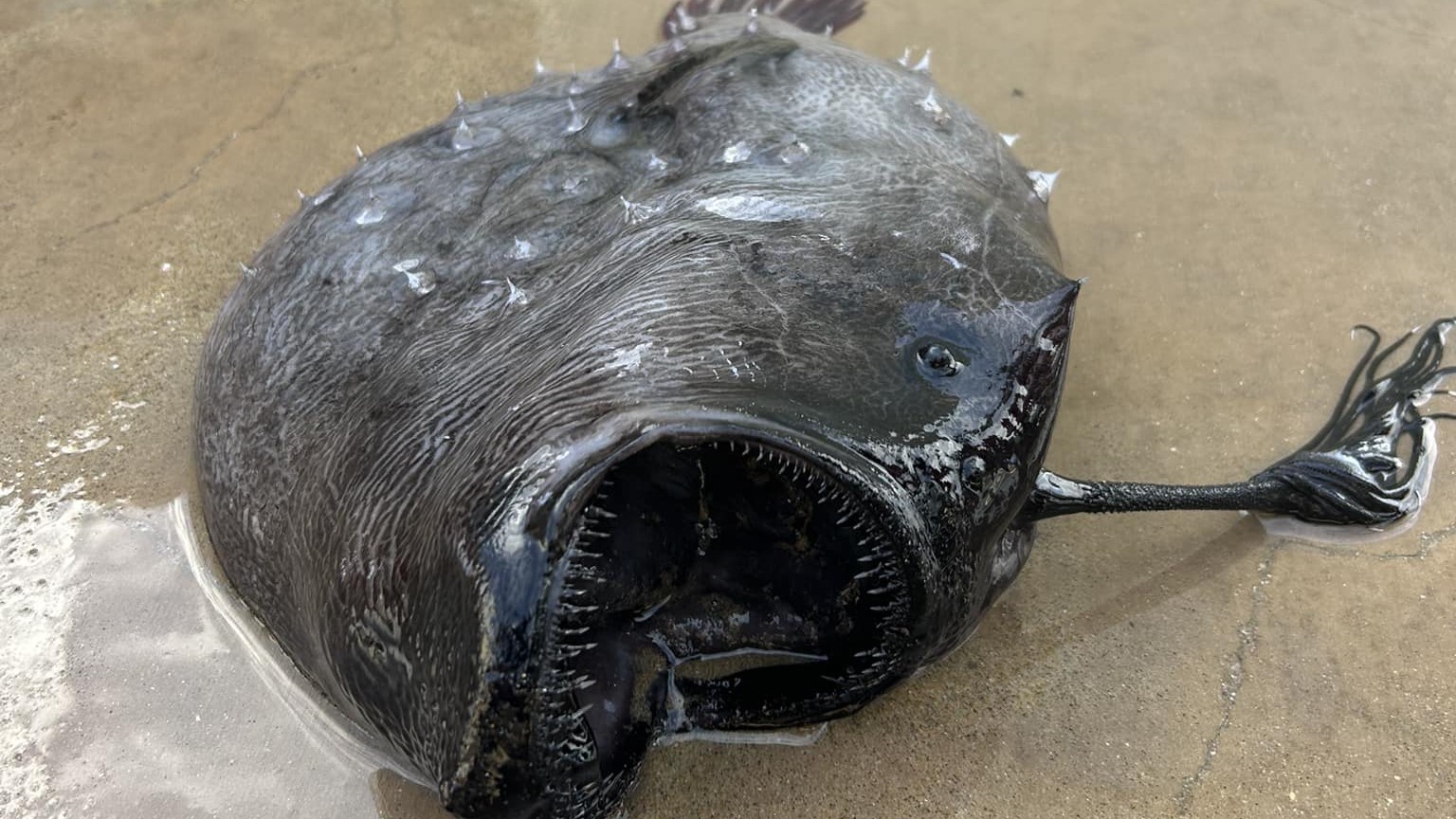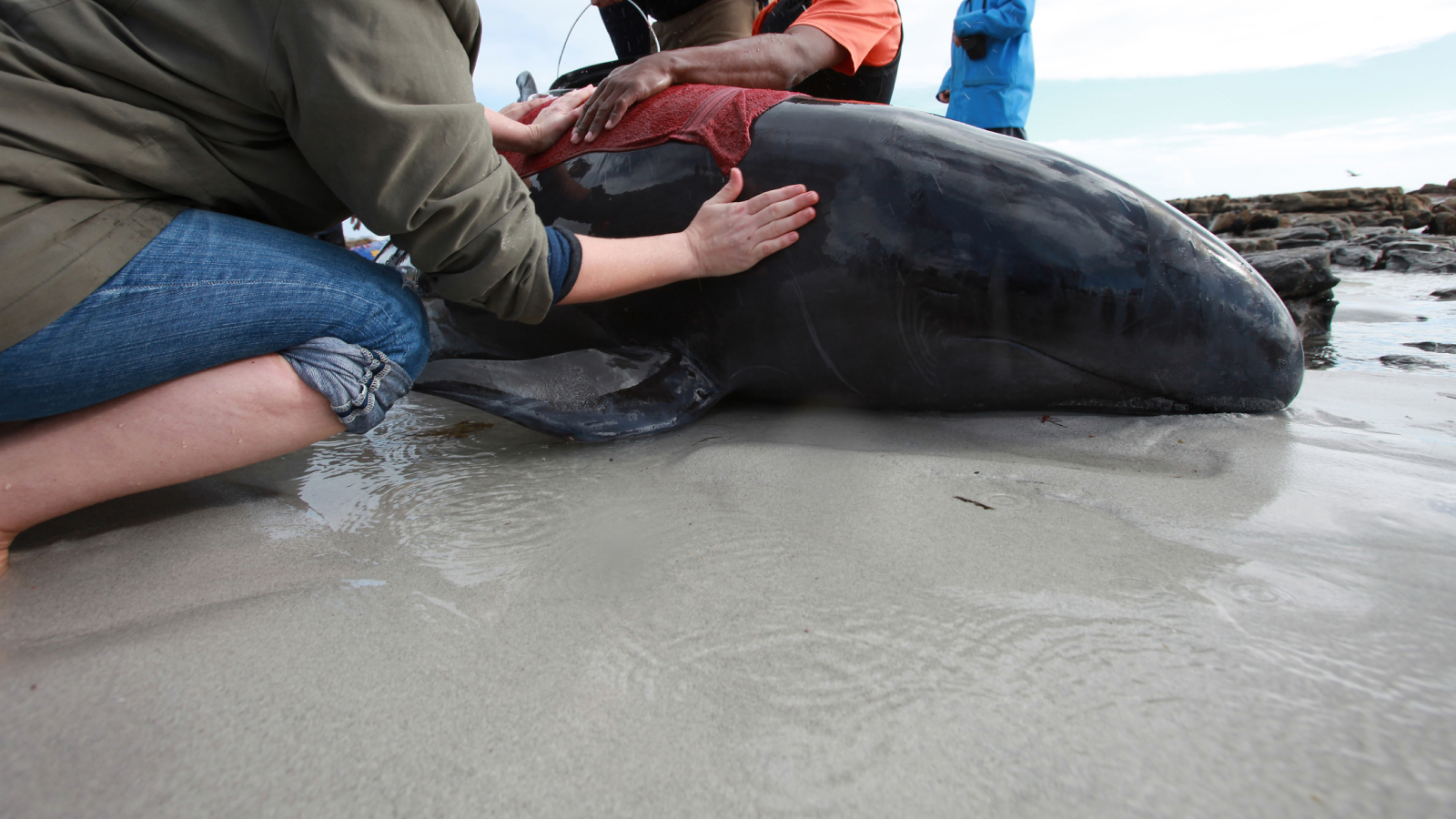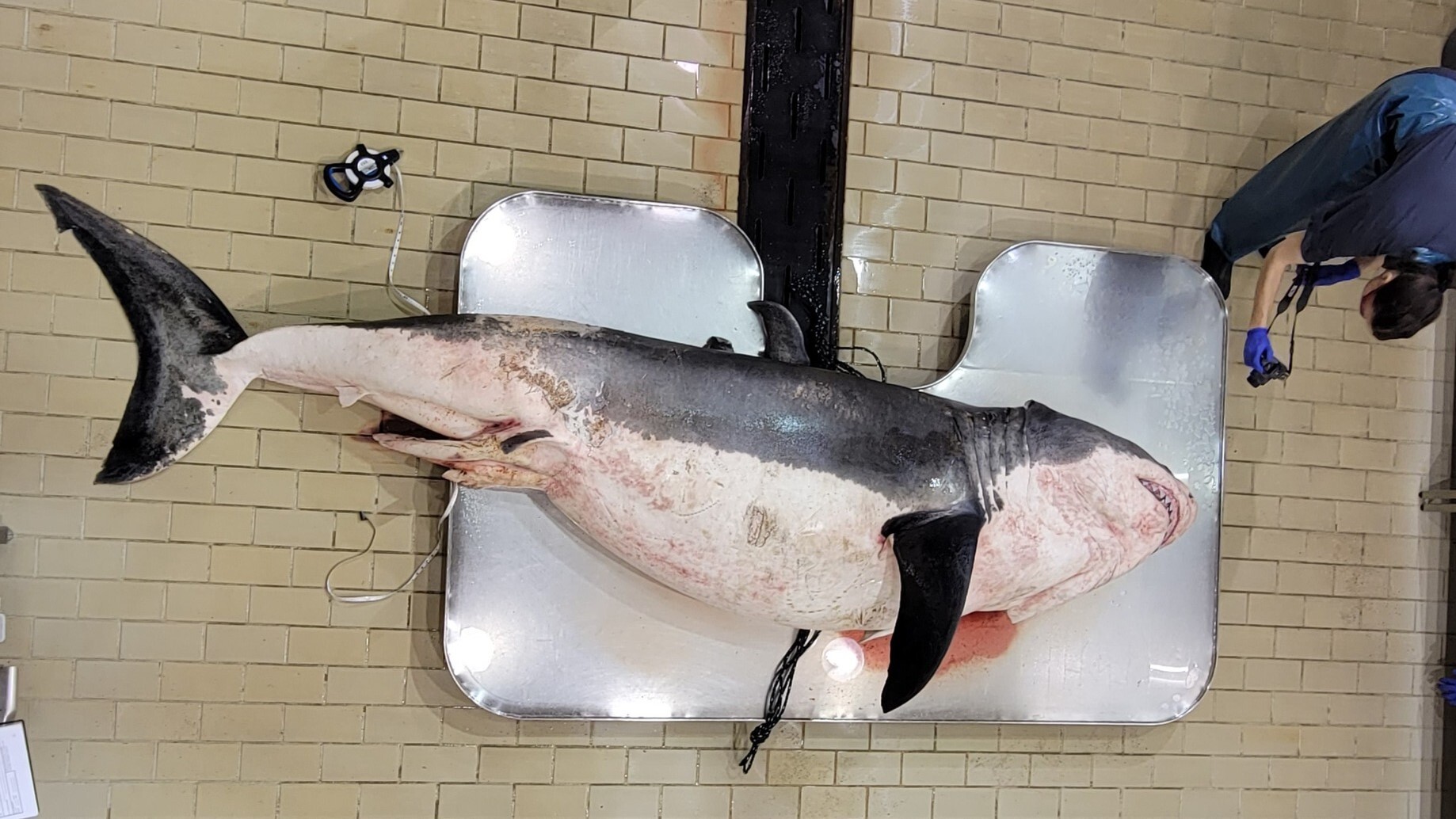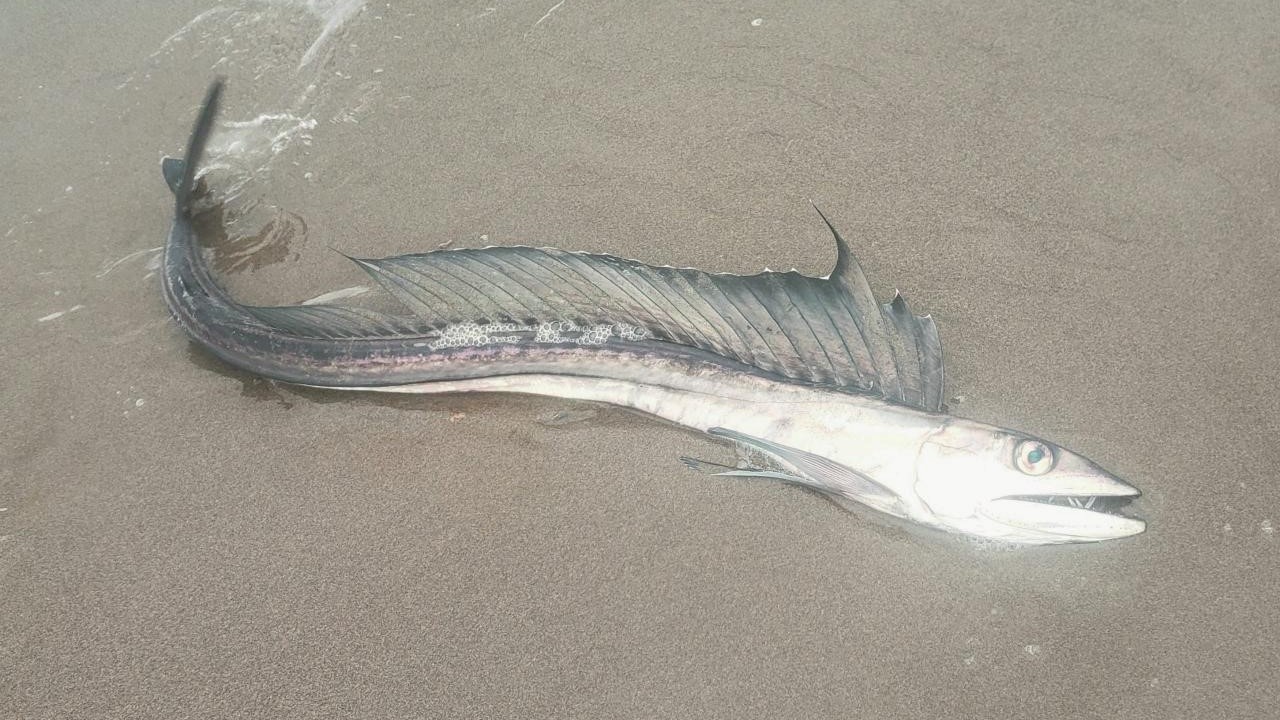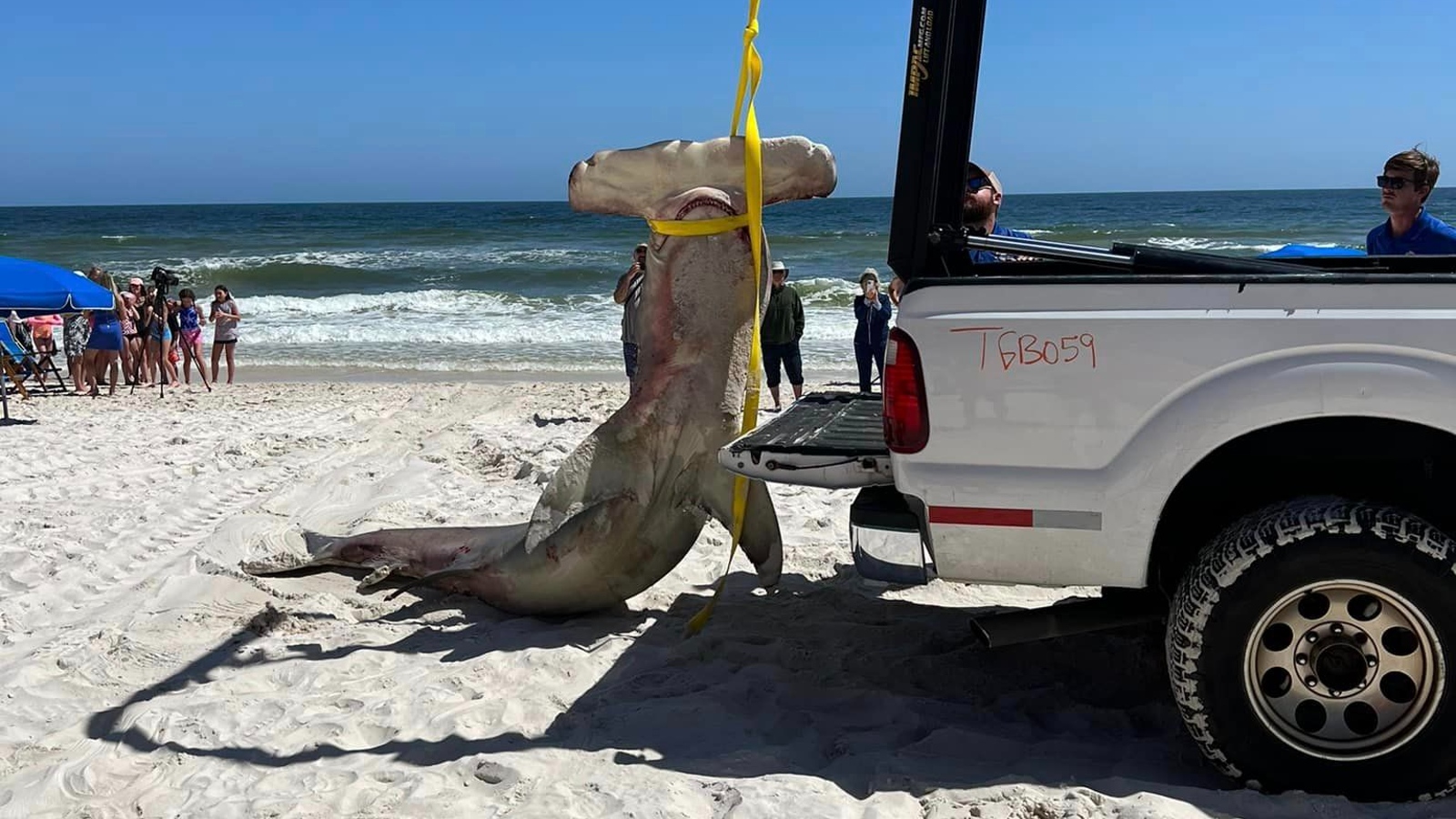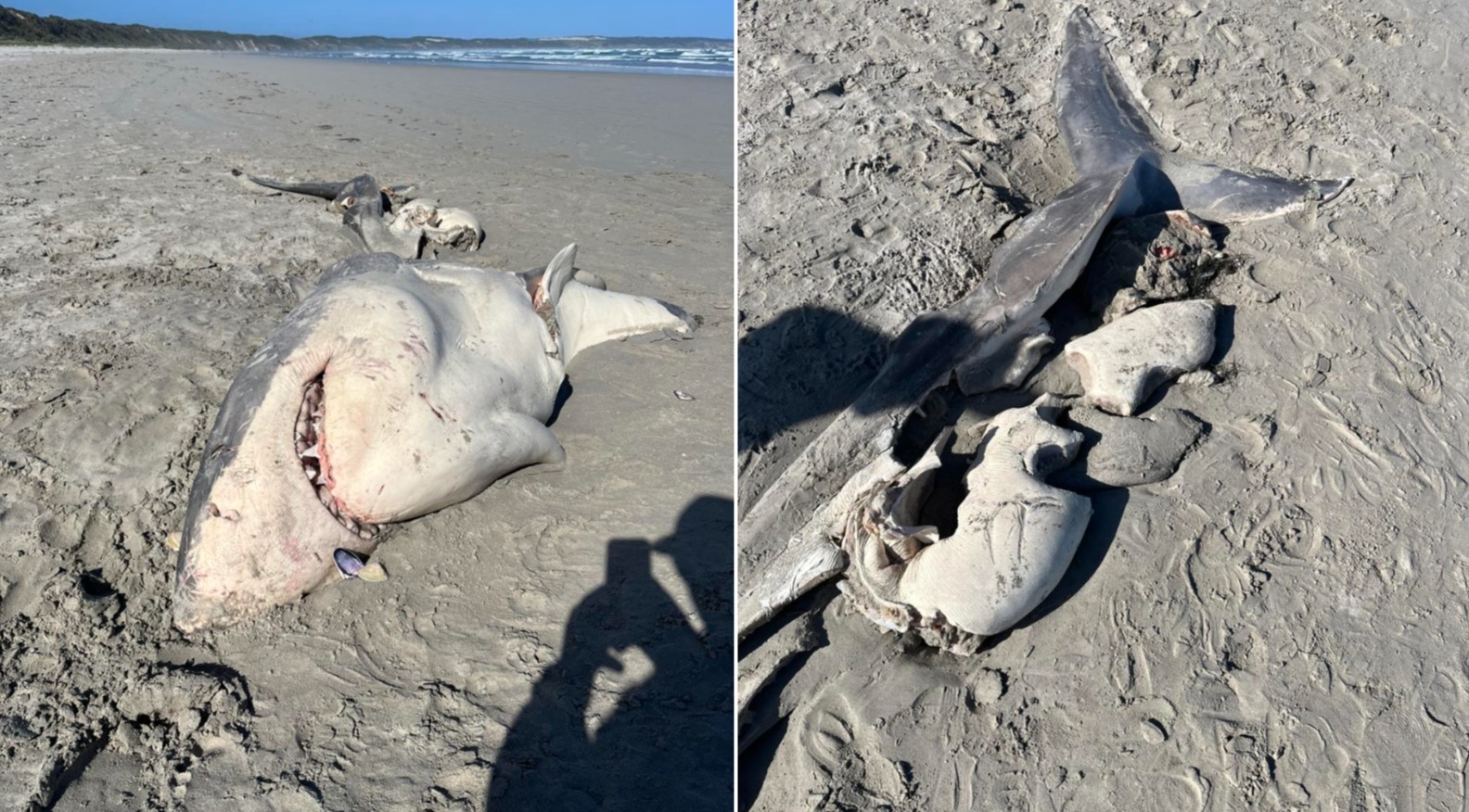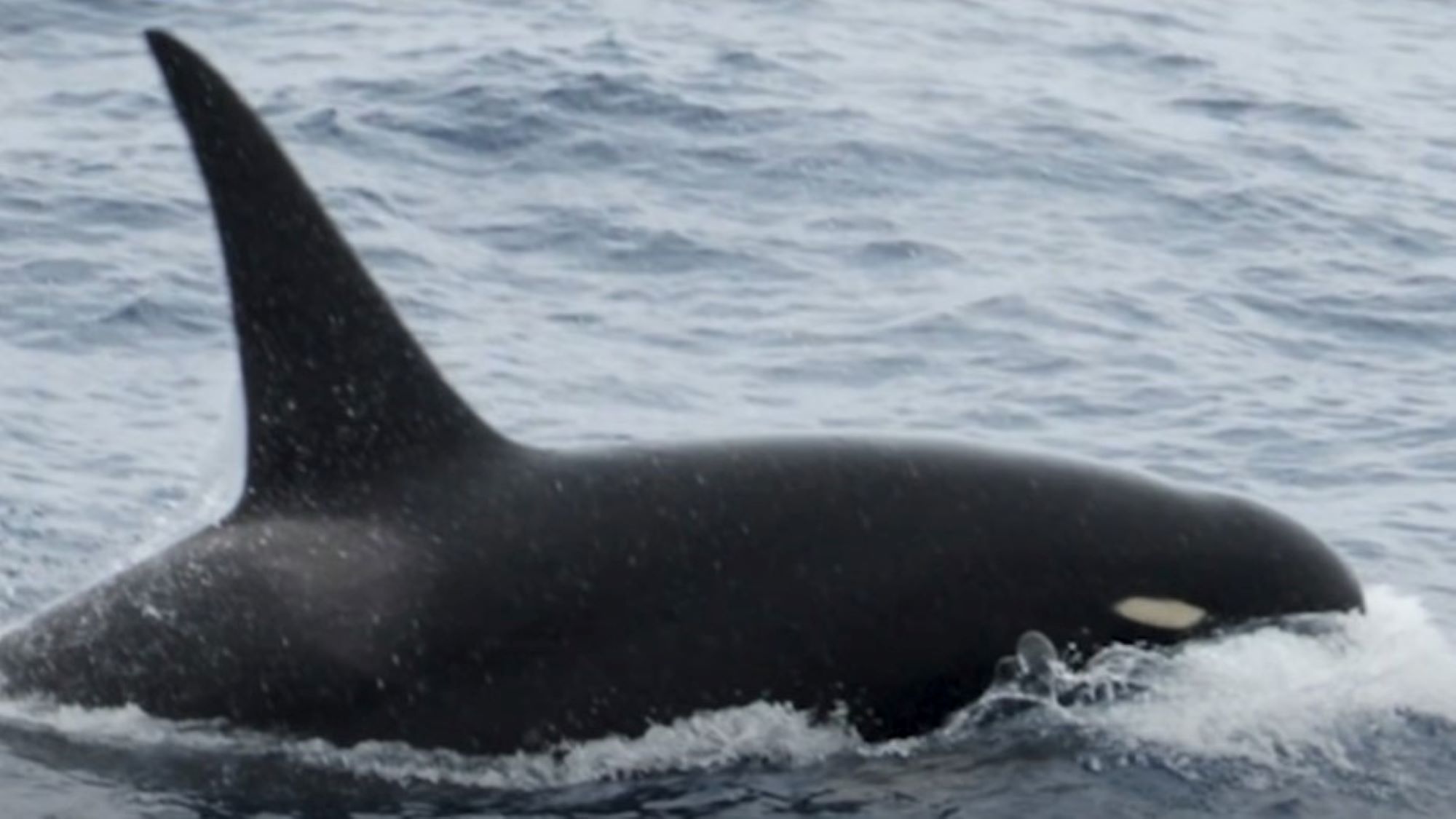10 creatures that washed up on the world's beaches in 2023
Rare sightings and haunting creatures of the deep appeared on beaches around the world this year — here are 10
The ocean is teeming with strange and little-seen creatures, but occasionally these enigmas from the deep wash ashore. Sometimes those strandings solve a mystery and other times they raise more questions than they answer. This year was no different, with ghoulish lightbulb-headed fish, a rotting "mermaid" and deep-dwelling pregnant sharks teeming with embryos all making appearances on beaches this year.
Pacific footballfish
A ghoulish-looking fish with prickly skin washed up on a beach in Southern California and no one knows why.
Experts from the California Department of Fish and Wildlife identified a nightmarish creature that washed ashore Oct. 17 at Moro Beach, California as a female Pacific footballfish (Himantolophus sagamius). This rare anglerfish usually lives at depths of 2,000 to 3,300 feet (600 to 1,000 meters) in the Pacific Ocean.
The hanging lure on its head is called an illicium, and just like a fishing lure, it stretches out from the fish spine and glows to entice prey. Once it lures that prey, it gobbles them up using translucent needle-sharp fangs.
Pilot whales in Scotland
In July, around 55 long-finned pilot whales (Globicephala melas) stranded on a remote beach on the Isle of Lewis in Scotland.
On Traigh Mhor beach, local authorities tried for hours to refloat the whales, but only successfully rescued one. The remainder were euthanized. Researchers suspect that the pod followed after a female whale that beached herself while trying to give birth, according to a statement from the British Divers Marine Life Rescue.
A healthy great white shark
On Oct. 5, a seemingly healthy great white shark was seen thrashing in shallow waters before mysteriously stranding on Broad Cove Beach in Nova Scotia. It eventually died, and even after a necropsy, scientists don't know what killed the animal.
Get the world’s most fascinating discoveries delivered straight to your inbox.
Longnose lancetfish
In May, a cannibalistic slender-bodied fish appeared on the shore along the coast of Oregon, one of several that washed up within weeks of each other.
It was an elusive long snouted lancetfish (Alepisaurus ferox), a rarely seen species that lives at depths of around 650 to 3,300 feet (200 to 1,000 meters) in the south-western and central-western Pacific Ocean. Some theories for strandings include illness, stormy weather conditions and temperature shock from unusually cold waters.
Rotten globster
In September, the remains of a white, mermaid-like creature appeared on the edge of Simberi Island in Papua New Guinea that shocked the locals and left scientists confused.
The body was so badly decomposed that scientists couldn't identify it, but it was clearly a marine mammal of some kind. When hard-to-identify animal remains wash up, they are called globsters.
Pregnant great hammerhead shark
An enormous great hammerhead shark (Sphyrna mokarran) was found dead in April near Orange beach in Alabama. After a closer look, researchers at Mississippi State University's Marine Fisheries Ecology (MFE) group found that she was carrying 40 pups.
After a necropsy, the team found that the shark's stomach was completely empty, a common occurrence for pregnant hammerhead sharks, who go months without eating. Her organs showed no signs of illness or disease, so the researchers suspect she died due to human fishing.
Pilot whales in Western Australian
In a rare spectacle in July, around 100 pilot whales beached themselves on Cheynes Beach in Western Australia.
Wildlife experts and volunteers from the Parks and Wildlife Service worked overnight trying to return as many whales as possible, using slings and vessels to carry them to deeper water. By the end of the day, however, 51 individuals had died.
The pod was spotted in the shallow waters the night before, swimming huddled tightly together. According to the Whale and Dolphin Conservation Group (U.K.), large strandings can happen because pilot whales live in tight social groups. So when leaders of the pod make navigational errors or get sick, they lead the rest of the pod to shore.
Great white shark ripped in two
In October, a 10-foot-long (3 m) great white shark (Carcharodon carcharias) was found ripped in half, disemboweled and smothered in orca (Orcinus orca) DNA on a beach in Australia. Scientists confirmed that orcas were the killers, as they are known to attack great white sharks.
Pregnant megamouth shark
For the first time ever, a pregnant megamouth shark (Megachasma pelagios) washed ashore in the Philippines, complete with her expelled pups.
The discovery has confirmed that this shark does not lay eggs, but gives birth to live young. The bodies of the juveniles have been taken to the National Museum of the Philippines where they will be preserved and studied.
Bulbous-headed orca
A mysterious group of bulbous-headed orcas washed ashore in Chile in June. It was only the second sighting of this strange group. The last case of a Type D orca being stranded goes back 67 years ago in New Zealand

Elise studied marine biology at the University of Portsmouth in the U.K. She has worked as a freelance journalist focusing on the aquatic realm.
- Hannah OsborneEditor


